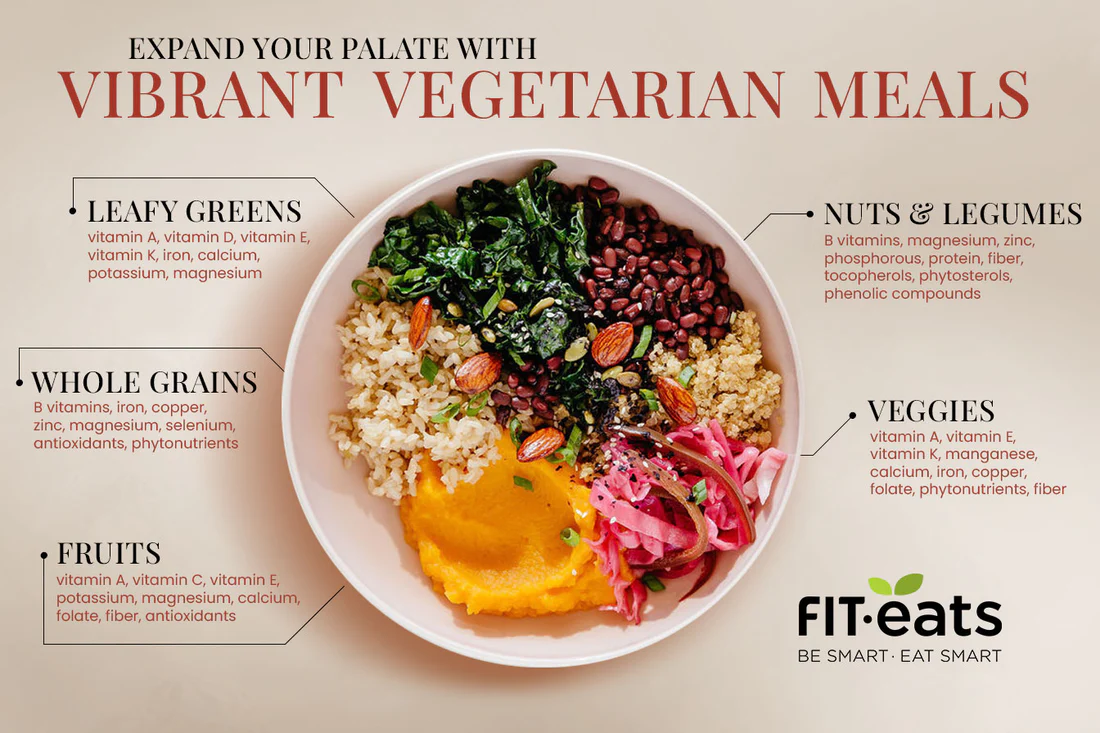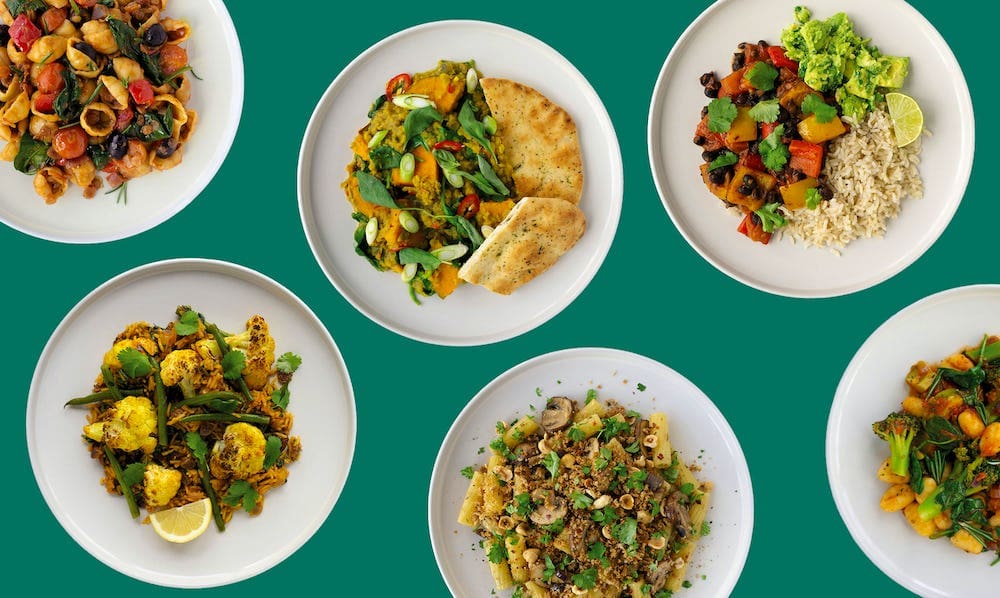As the demand for sustainable, health-conscious eating grows, plant-based cuisine is taking center stage, captivating food enthusiasts with its remarkable diversity and innovation. No longer confined to stereotypes of blandness, plant-based foods now boast bold flavors, enticing textures, and global inspiration that rival—and often surpass—traditional meat-centric dishes. Thanks to cutting-edge food technology and creative culinary techniques, this movement has unlocked a treasure trove of options ranging from savory meat alternatives to vibrant produce-packed meals. Whether you’re drawn by ethical considerations or simply seeking exciting new tastes, this exploration into the world of plant-based foods promises to redefine your palate with dishes that are as satisfying as they are nourishing. Dive in and savor the endless possibilities of this thriving culinary revolution!
As the world becomes increasingly health-conscious and environmentally aware, the popularity of plant-based diets has skyrocketed. Many individuals are now choosing to adopt a plant-based lifestyle, either for ethical, environmental, or health reasons. And with this shift, there has been a growing interest in exploring the culinary diversity of plant-based foods and their potential to satisfy human palates. While traditionally, plant-based diets were often seen as boring and bland, recent advancements in food technology and creative cooking methods have led to a wide range of delicious and flavorful plant-based options. In this article, we will delve into the world of plant-based cuisine and uncover the endless possibilities that exist beyond the traditional meat-centric diet. From mouth-watering meat substitutes to vibrant and nutrient-dense fruits and vegetables, we will explore the diverse range of plant-based foods and their potential to tantalize taste buds and satisfy even the most discerning palates. Join us on this culinary journey and discover the exciting and delicious world of plant-based cuisine.
Plant-based foods offer diverse flavors
The culinary world has seen a significant rise in the popularity of plant-based foods, and one of the key reasons behind this trend is the diverse range of flavors they offer. From vibrant fruits and vegetables to legumes, grains, and spices, plant-based ingredients present an endless array of tastes and textures that can cater to a wide range of palates. Whether it’s the bold and robust flavors of roasted root vegetables, the delicate sweetness of tropical fruits, or the aromatic spices that infuse plant-based dishes, exploring the culinary diversity of these foods can be a delightful and satisfying experience. By embracing plant-based options, individuals can not only enjoy the health benefits associated with these choices but also discover a world of flavors that can elevate their meals to new heights.

Unique ingredients elevate dishes
In the realm of culinary exploration, unique ingredients have the power to elevate dishes to unprecedented levels of flavor and sophistication. By incorporating uncommon herbs, spices, and specialty produce, chefs and home cooks alike can create culinary masterpieces that leave a lasting impression on diners. These distinctive ingredients add depth, complexity, and a touch of excitement to the dining experience. From the earthy notes of truffles to the tangy-sweet burst of yuzu, each unique ingredient brings its own personality to the plate, creating a harmonious symphony of flavors that captivates the senses. By embracing these extraordinary ingredients, chefs are able to push the boundaries of taste and create unparalleled dining experiences that leave a lasting impression on those fortunate enough to indulge in their creations.
Variety of textures available
One of the remarkable aspects of exploring the culinary diversity of plant-based foods is the wide variety of textures available. From the crispness of fresh vegetables to the velvety richness of pureed legumes, plant-based ingredients offer a spectrum of textures that can transform a dish. The delicate crunch of roasted chickpeas, the creamy smoothness of avocado, and the satisfying chew of seitan are just a few examples of the diverse textures that plant-based foods bring to the table. These textures not only add dimension and visual appeal to a dish but also contribute to the overall sensory experience, enhancing the pleasure of each bite. Whether you’re seeking a satisfying crunch or a melt-in-your-mouth sensation, the world of plant-based ingredients provides a captivating array of textures to explore and savor.
Vegan options can surprise tastebuds
While the notion of vegan options may initially evoke thoughts of bland and uninspiring meals, the reality is quite the opposite. The culinary world has seen an explosion of innovative plant-based creations that can surprise even the most discerning of palates. From plant-based burgers that mimic the taste and texture of meat to dairy-free ice creams that rival their traditional counterparts, chefs and food scientists have pushed the boundaries of plant-based cuisine. By utilizing inventive ingredient combinations and culinary techniques, vegan options can deliver a range of flavors that are both delicious and unexpected. The intricate blend of spices, the umami-rich profiles of fermented foods, and the natural sweetness of fruits can all come together to create a sensory experience that leaves a lasting impression. As more individuals embrace a plant-based lifestyle, the culinary diversity of vegan options continues to expand, proving that deliciousness knows no bounds when it comes to plant-based foods.

Flavors from around the world
The world is a melting pot of flavors, with each region offering its own unique culinary traditions and ingredients. Exploring the culinary diversity of plant-based foods allows us to embark on a global gastronomic journey without leaving our kitchens. From the fiery spices of Indian curries to the delicate herbs of Thai cuisine, plant-based dishes have the ability to transport our taste buds to far-off lands. The earthy aromas of Mediterranean cuisine, the bold and tangy flavors of Mexican salsas, and the complex umami of Japanese miso are just a few examples of the exciting flavors waiting to be discovered. By incorporating international influences into our plant-based cooking, we can create vibrant and satisfying meals that not only nourish our bodies but also awaken our senses to the rich tapestry of global cuisine.
Plant-based cooking is versatile
Plant-based cooking offers a remarkable level of versatility that allows for endless culinary possibilities. With a wide array of fruits, vegetables, grains, legumes, and plant-based proteins at our disposal, we have the flexibility to create a diverse range of dishes that cater to different tastes and dietary preferences. From hearty and comforting stews to light and refreshing salads, plant-based cooking can easily adapt to various flavor profiles and cooking techniques. Whether you prefer to indulge in rich and flavorful curries or savor the simplicity of a fresh vegetable stir-fry, the versatility of plant-based ingredients ensures that there is something for everyone to enjoy. Additionally, plant-based cooking allows for creative substitutions and innovations, empowering individuals to experiment with new ingredients and techniques to truly personalize their culinary experiences. The possibilities are endless, making plant-based cooking an exciting and rewarding endeavor for those seeking to explore the culinary diversity of plant-based foods.
Options for every mealtime

When it comes to plant-based cooking, one of the most enticing aspects is the abundance of options available for every mealtime. From breakfast to dinner and everything in between, plant-based cuisine offers a multitude of delicious and nutritious choices. Start your day with a hearty tofu scramble or a refreshing smoothie bowl packed with vibrant fruits and superfoods. For lunch, indulge in a colorful grain salad or a satisfying veggie wrap filled with crunchy vegetables and plant-based proteins. When dinner rolls around, explore the flavors of international cuisine with dishes like spicy chickpea curry, flavorful vegetable stir-fry, or a comforting bowl of lentil soup. And let’s not forget about the indulgent desserts – from creamy avocado chocolate mousse to decadent vegan cheesecake, there is no shortage of sweet treats to satisfy your cravings. With plant-based cooking, you can truly experience a world of flavors and options for every mealtime, ensuring that your palate is constantly delighted and your body nourished.
Delicious and nutritious choices
In the realm of plant-based cooking, the possibilities for creating delicious and nutritious dishes are endless. Embracing a plant-centric lifestyle means exploring a wide variety of ingredients, flavors, and cooking techniques that can excite and satisfy the human palate. Picture a colorful array of vibrant vegetables, wholesome grains, and protein-rich legumes expertly combined to create mouthwatering meals. From a zesty quinoa and roasted vegetable salad to a savory mushroom and lentil stew, these plant-based choices not only provide an explosion of taste but also offer a plethora of essential nutrients that support a healthy lifestyle. The beauty of these delicious and nutritious options lies in their ability to nourish our bodies while simultaneously satisfying our culinary desires.

Perfect for adventurous eaters
For those seeking culinary experiences that push the boundaries and tickle the taste buds, the world of plant-based foods offers an enticing playground. With a vast array of unique and innovative ingredients, plant-based cuisine provides an opportunity for adventurous eaters to explore uncharted flavors and combinations. From tantalizing jackfruit tacos to indulgent cashew cheese spreads, the possibilities are endless. The beauty of plant-based cooking lies in its ability to reimagine traditional dishes and introduce new and exciting flavors from around the globe. Whether it’s discovering the umami-rich flavors of miso or experimenting with the aromatic spices of Indian cuisine, plant-based options offer a thrilling gastronomic adventure for those willing to step outside of their culinary comfort zones. Embrace the exciting world of plant-based foods and unleash your inner food explorer.
Plant-based meals can satisfy cravings
The culinary world is often synonymous with indulgence and satisfying cravings, and plant-based meals are no exception. Contrary to the belief that a plant-based diet lacks flavor or satisfaction, these meals have the potential to fulfill even the most insatiable appetites. With a focus on fresh, whole foods, plant-based dishes can be crafted to deliver a wide range of tastes and textures that satisfy the cravings for savory, sweet, and everything in between. From hearty lentil burgers that rival their meat counterparts to rich and creamy dairy-free desserts, plant-based cuisine proves that healthy eating can be both nutritious and indulgent. So, whether you’re a self-proclaimed foodie or simply looking to explore new flavors, don’t underestimate the power of plant-based meals to satisfy your cravings and leave you feeling truly satisfied.
In conclusion, the culinary diversity of plant-based foods is vast and ever-growing, providing an exciting and satisfying alternative to traditional animal-based dishes. With the advancements in plant-based technology and the creativity of chefs and food manufacturers, there is no limit to what can be achieved in terms of taste, texture, and overall satisfaction with plant-based meals. As we continue to prioritize sustainability and ethical food choices, the potential for plant-based foods to satisfy human palates is immense, making it a promising and delicious option for all.
FAQ
What are some examples of plant-based foods from different cultures that offer a diverse range of flavors and textures?
Some examples of plant-based foods from different cultures that offer a diverse range of flavors and textures include tofu from East Asia, hummus from the Middle East, tempeh from Indonesia, falafel from the Mediterranean, dosa from South India, and jackfruit from Southeast Asia. These foods showcase the variety of plant-based options available and demonstrate the different ways cultures utilize plants for delicious and satisfying meals. From the softness of tofu to the crunchiness of falafel, these plant-based foods offer a wide range of textures and flavors that cater to diverse culinary preferences.
How have advancements in plant-based food technology and innovation contributed to the culinary diversity of plant-based options?
Advancements in plant-based food technology and innovation have significantly contributed to the culinary diversity of plant-based options. These advancements have allowed for the creation of plant-based alternatives to traditional animal products, such as meat substitutes, dairy alternatives, and egg replacements. Through processes like molecular gastronomy and food engineering, plant-based ingredients can be transformed into a wide variety of textures, flavors, and forms. This has expanded the possibilities for plant-based cooking and has led to the development of a diverse range of plant-based dishes and cuisines. Overall, these advancements have made plant-based options more accessible, appealing, and versatile for individuals seeking to incorporate more plant-based foods into their diets.
Can plant-based foods truly satisfy the cravings and taste preferences of meat-eaters?
Yes, plant-based foods can satisfy the cravings and taste preferences of meat-eaters. With advancements in food technology, plant-based alternatives have become more realistic in terms of taste, texture, and flavor. Products like plant-based burgers, sausages, and nuggets closely mimic the taste and mouthfeel of meat. Additionally, creative use of spices, herbs, and cooking techniques can enhance the flavors of plant-based dishes. Many meat-eaters have successfully transitioned to a plant-based diet and found satisfaction in the variety and deliciousness of plant-based foods. Ultimately, individual preferences and openness to trying new things play a significant role in determining satisfaction with plant-based options.
What are some common misconceptions about plant-based foods and how can they be debunked through culinary exploration?
Some common misconceptions about plant-based foods include the ideas that they are tasteless, lacking in protein, and not filling. However, these misconceptions can be easily debunked through culinary exploration. Plant-based foods can be incredibly flavorful, with a wide variety of herbs, spices, and cooking techniques available. They can also be rich in protein, with options like tofu, beans, and lentils. Lastly, plant-based meals can be just as filling as those containing animal products, with ingredients like whole grains, nuts, and legumes providing ample satiety. By experimenting with different recipes and ingredients, individuals can discover the delicious and satisfying potential of plant-based foods.
How can individuals incorporate more plant-based diversity into their diets and what are the potential health benefits of doing so?
Individuals can incorporate more plant-based diversity into their diets by trying new fruits, vegetables, legumes, and grains. They can experiment with different recipes and cuisines that focus on plant-based ingredients. By doing so, they can benefit from a wide range of nutrients, vitamins, and minerals that are abundant in plant-based foods. Additionally, incorporating more plant-based diversity can help improve overall health by reducing the risk of chronic diseases such as heart disease, diabetes, and certain types of cancer. It can also contribute to weight management, improved digestion, and increased energy levels.



